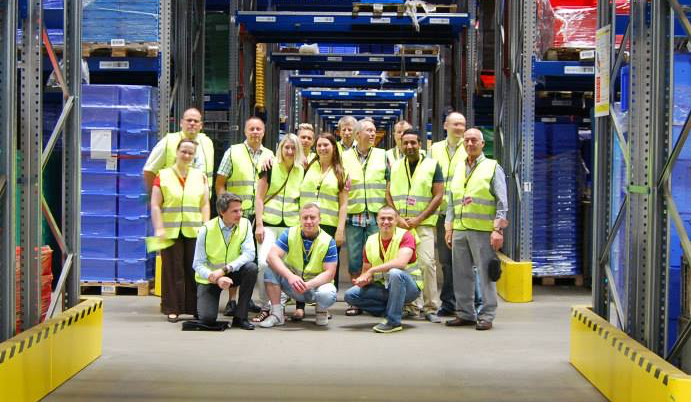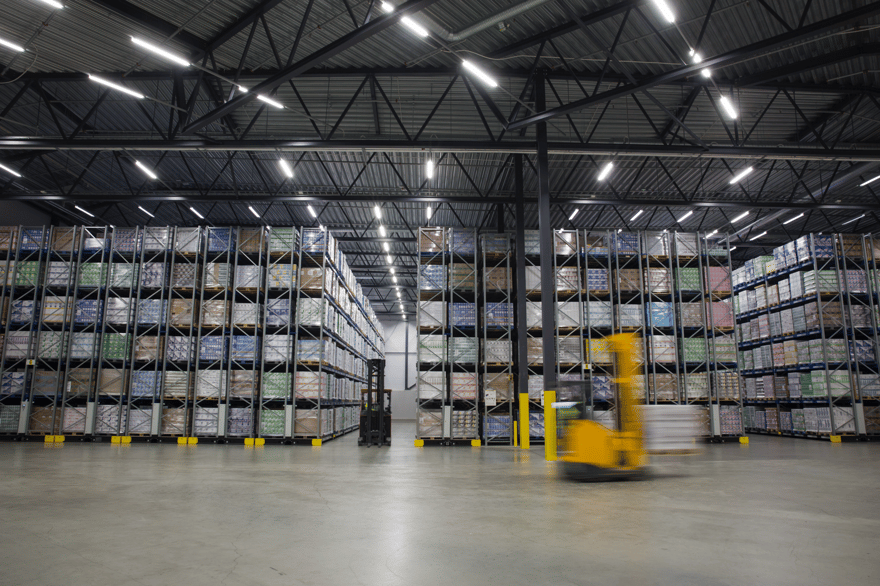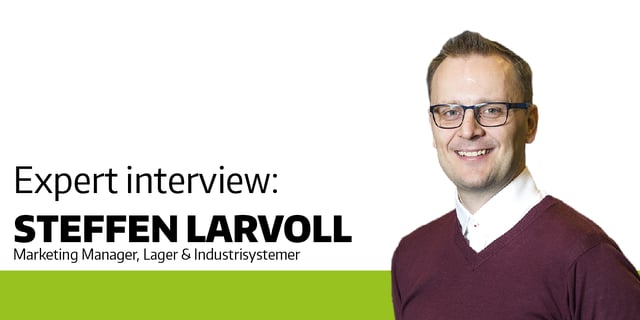Hjem > New Podcast Blog > What happened when HubSpot revolutionized LIS' marketing, website & internal processes
What happened when HubSpot revolutionized LIS' marketing, website & internal processes
12. juli 2017
Learn how we improved LIS’ website quality, increased the lead generation by 70% – and enabled the client to handle all of their sales qualified leads.
We all want more sales qualified leads, right? So did the Norwegian supplier of warehouse solutions, Lager Industrisystemer AS (LIS). And we at Inbound Group helped them achieve just that by enhancing efficiency in their internal processes and introducing new routines to better handle their many sales qualified leads. Moreover, we equipped them with an amount of sales qualified leads so enormous that they had to slow down their marketing efforts after just ten months of inbound marketing. It's almost like a fairy tale.
How? By taking full advantage of the many brilliant opportunities HubSpot offers.
READ MORE: (in Norwegian): 5 HubSpot-triks du (sannsynligvis) ikke kjenner til
In short: In 2016 we introduced LIS to HubSpot as a full service for all departments, including marketing, sales, and technical. From here we were able to transform their traditional way of working and seamlessly implement inbound marketing.
We were given the opportunity to spend their marketing budget on whatever marketing initiative we believed would give the best result. So what did we do? Created and promoted content to attract interesting leads, increased the website visibility in search engines through Google Ads, implemented growth driven design, repurposed old content and took advantage of Hubspot for internal and external storage and sharing of data.
Read on to learn how we increased the website grader score from 54 to 97, increased the lead generation by 70% – and enabled the client to handle all of their sales qualified leads.
The client: Lager Industrisystemer AS

Lager Industrisystemer AS is a total provider of warehousing, industrial and logistics solutions to the corporate market in Norway as the local supplier of German quality products from SSI Schäfer, and has broad experience in tailoring solutions for a variety of businesses.
For more than 40 years, they have provided solutions that equip their customers with competitive advantages within key areas such as supply chain security, location management, returns and picking routines.
LIS is the first company in their industry to invest in inbound marketing. This is an area that has previously lacked Norwegian content online, and most of the content has previously been found in printed trade magazines.

The journey: From lacking leads to having too many SQLs to handle
A journey doesn’t simply bring with it one challenge or one solution. This is why we've split LIS’ journey into three parts: the rise of inbound marketing, the implementation of growth driven design and the increased efficiency using HubSpot. Follow our journey to see how we went through deep waters and climbed high mountains to reach LIS’ kingdom of inbound success.
Chapter 1: Inbound Marketing

Once upon a time, LIS had a goal of reaching 41 new leads and two new customers every month after 12 months, with inbound marketing as their main marketing strategy. To reach these goals, it was necessary to increase the traffic to the website and raise brand awareness.
Equipped with a content strategy consisting of four blog posts per month and a total of six pieces of premium content spread across the first 12 months, we began our journey towards growth. With focus on three personas (CEO, logistics manager, and e-commerce entrepreneur) we created and published high-quality content for the client’s blog as well as downloadable content.
We promoted the content in social media channels and optimized it for search engines. We guided the personas through the sales funnel by using marketing automation to make sure that every lead was regularly followed up with more relevant information based on their actions and interest.
We worked day and night, and it didn’t take long before the leads started ticking in. And with the increased interest in the company, a 41 percent increase in number of pageviews and 52 percent increase in number of unique pageviews, fame soon followed.
Inbound marketing started to open many doors for Marketing Manager in LIS, Steffen Larvoll. He was first invited to speak at the “Transport Logistics” conference in Lillestrøm 18th February 2016, as a result of the blog’s success.
In 2017 he has been head of the jury for “The Logistics Experience of the Year”, a Norwegian competition awarding the online store that provides their customers with the best logistics experience. That's not to mention all the talks he's held at different logistics fairs and education programs.
“I often get contacted by organizations, magazines and other commercial operators to make statements about logistics and trends. When I speak to people for the first time and introduce myself, I often get the answer: ‘Oh, so you’re Steffen’”.
Larvoll is currently in discussions with different Norwegian industry magazines that have expressed interest in republishing blog articles on their own website. Even though the articles in average are longer than Google’s SEO recommendations, more than 50 percent of the people that read an article scroll down to the bottom of the article, according to Hotjar.
But the journey doesn’t stop here. After only six months as a customer of Inbound Group, LIS moved all of their marketing efforts over to us for a focused emphasis on website visibility and lead generation – through a combination of inbound marketing and growth driven design.
Chapter 2: Growth driven design
And so the story continues, this time through growth driven design. This was implemented in order to optimize the usability and existing content on the website. Although we didn’t fight any trolls along the way, we did perform a lot of other initiatives.
First of all we mapped out the buyer’s journey and tailored the website structure around it. Then we jumped to the fun part: redesigning the blog and changing the design and content of different pages to improve the quality. When designing the blog, we changed the menu, added categories, changed the hover effect on the images and made CTAs larger and more reader-friendly. We also optimized all the content for search engines.
And the results? After we moved the website over to the HubSpot platform and implemented GDD, we have increased the technical quality from 54 to 97 on a scale from 1-100 (source: Website Grader).
These days, we’re currently implementing our newest addition to the website: pillar content. This will further improve the website’s rankings in search engines because as we all know: topics beat keywords any day.
The hard SEO work already paid off. Comparing stats from 15th February to 15th March 2017 with the previous year, we found there was a 50 percent increase in organic sessions. Closer research showed that organic visitors have the most visited pages for each session (a total of 3.47!) and stay on the website for almost three minutes.
From the cold winter month of February to the blooming 25th of May, organic traffic resulted in almost half as many visits as direct, while social media was responsible for 12 percent of the total visits. New visits increased the most with a total of 62 percent.
Day in and day out, the leads kept ticking in. This new marketing strategy paid off, and everyone in the kingdom was happy – except the sales department. Why? Because they now suddenly had too many unhandled sales qualified leads burning in their hands.
Chapter 3: Handling the sales qualified leads in a more efficient way
After the first inbound marketing content went live on 1st of March 2016 and the leads started coming in, frustration in the sales department increased.
Gathering and storing information is a major part of LIS’ daily work. However, the internal processes had not been optimized. Previously, they'd use a paper checklist to gather the information they needed to make an offer to their prospects, which was a time-consuming method that often led to many half-empty checklists. This complicated the work of other departments as they often lacked important information that would have been beneficial to the sales process.
And this could have been the end of the story: the sales department spending time chasing the missing information rather than following up sales qualified leads. But we at Inbound Group wanted a happy ending. So we decided to make a digital checklist in HubSpot.
After a while, the kingdom realized that this initiative would be so much more than just a checklist. How? It would be connected to several workflows. Whenever a consultant went to visit a prospect’s warehouse and were to fill out the checklist according to the prospect’s needs and wants regarding warehouse solutions, the information would be sent out to different people at the LIS office because of these workflows.
The consultant himself and the technical department were to receive the whole checklist form per email. Moreover, the prospect would get a summary with the information he needed to know. And if the consultant had ticked off the box concerning the assembly of a warehouse solution, the assembly department would receive this information in a separate email.
Magic, people in the kingdom asked? No, just HubSpot, Marketing Manager Larvoll explained.
But this only solved parts of the problem. The sales team now had time to focus on the SQLs again. And on a warm, sunny day in the kingdom, we decided it was also time to share our knowledge. The sales department got training in how to handle the hot leads. LIS now predicts that they will increase the capacity on average of 25%, and in some cases up until 50% compared to last year.
Before this journey, most of LIS’ customers came from word of mouth. So why did we need to increase the brand awareness? The answer is simple: LIS ended up serving the same customers over and over again but weren’t able to reach out to people and companies outside their network.
Let’s just say that this has changed. After twelve months of inbound marketing, LIS has gotten 270 sales qualified leads. Moreover, a total of 405 leads has downloaded a premium content, and 111 of these contacts has downloaded more than one premium content. In other words, we have both managed to increase the number of leads and created such relevant content that one out of four leads has decided to download more.
The number of new leads was 204 in the second period compared to 28 in the first period, and organic traffic is today one of the largest sources of new leads.
And best of all? The number of new orders has increased by 30 percent, from 77.8 MNOK to 101 MNOK. In the business that LIS operates in, there has not been much growth the last five years. In addition, the buying process is comprehensive, long, and each deal is worth around 200,000 Norwegian kroner ($23,500).
Through redistributing their entire marketing budget to inbound marketing and growth driven design, we at Inbound Group increased the number of leads, established LIS as a thought leader in the business of warehouse and logistics, improved their website and developed routines that will improve the efficiency of their internal processes.
If that isn’t inbound marketing success at it’s best, we don’t know what is.
We all lived happily ever after.
READ MORE:When should you insource your warehouse?(Expert interview with Steffen Larvoll)
This report is Inbound Groups submission to the HubSpot Impact Awards 2017






